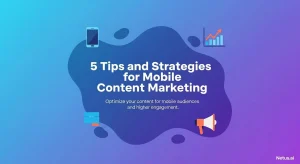Research Paper Citation: A Comprehensive Guide for Success
Ashley Merit
Content writer and editor for Netus.AI
Table of Contents
Research Paper Citation. In the realm of academia, plagiarism has become a growing concern for educational institutions. Plagiarism cases continue to rise, posing a threat to the reputation of schools and other establishments. Strict policies are implemented to address students involved in committing plagiarism, as these allegations can have a lasting impact on their careers.
To avoid plagiarism and its consequences, students must ensure they properly credit their sources when writing papers. Proper research paper citations play a crucial role in upholding academic honesty. Failure to cite articles correctly can lead to instances of plagiarism, and research papers should be thoroughly checked for any such issues.
Key Takeaways
- Plagiarism is a growing concern in academia, affecting both institutional reputation and individual careers.
- Properly crediting sources through citations is essential for maintaining academic integrity.
- Ensuring adequate citation in research papers helps avoid instances of plagiarism and keeps academic writing honest.
What Is Citation?
Citation is a crucial aspect of academic writing, as it allows the acknowledgment of other people’s work when incorporated into one’s own research or argument. By adhering to citation guidelines, authors can maintain a consistent and structured referencing approach.
The fundamental purpose of a citation is to provide a clear trail back to the original source while avoiding plagiarism. Citation styles, such as APA, MLA, and Chicago, offer guidelines to ensure proper credit is given to the source. During the writing process, both direct quotations and paraphrases must be cited, with relevant details like the author’s name, page number, publisher, and the date of publication.
The Purdue OWL is a reliable resource for understanding various citation styles and adhering to academic writing standards. By following the rules set forth by the citation style and incorporating the necessary information in their work, researchers and students can respect copyright and avoid any legal consequences while producing valuable contributions to their field of study.
Know the Necessity of Citing Sources
Citing sources, such as books, journals, newspapers, and websites, plays a crucial role in academic and professional communication. To avoid plagiarism – taking someone else’s work and presenting it as your own – students and researchers should always give credit to the original source. This helps maintain ethical standards and demonstrates credibility in their writings.
Moreover, crediting sources showcases the writer’s extensive research on various source types, such as journal articles, lectures, and meta-analysis. It reflects a thorough understanding of the topic and contributes to a higher grade. Citing relevant sources also allows the reader to easily access and expand their knowledge of the subject matter.
Failing to cite sources can lead to serious consequences, such as legal actions, as countries have strict copyright laws. Violations may result in monetary compensation or other penalties. To ensure a responsible and trustworthy academic environment, always acknowledge the original authors and sources, thereby promoting proper knowledge-sharing.
Some Common Citation Mistakes
When writing a research paper, citations play a crucial role in maintaining accuracy and avoiding plagiarism. However, several common mistakes tend to occur:
- Confusion between citation and bibliography: Students often confuse citations with bibliographies. A citation includes the sources used in the paper, whereas a bibliography lists additional works consulted during research but not directly quoted or paraphrased.
- Lack of full-length citations: It’s essential to include both in-text and full-length citations, as an in-text citation is incomplete without its corresponding full citation in the reference list.
- Overlooking online articles: Contrary to popular belief, online articles require citation, too. Be sure to include the URL and the date of access when citing online sources.
- Not citing paraphrased content: Paraphrasing another’s work still requires citation, as it is essential to credit the original author for their ideas or research.
- Self-plagiarism: When referring to one’s work, proper citation is necessary to avoid self-plagiarism.
- Inconsistent citation styles: Using multiple citation styles within a single paper can lead to confusion and inaccuracy. Stick to one citation format (e.g., APA, MLA, Chicago) throughout the paper.
- Errors in citation details: Spelling mistakes or missing information in a citation can result in plagiarism. Ensure all required information is provided and double-check for accuracy.
By being aware of these common citation mistakes and taking measures to prevent them, students can maintain an informative, accurate, and plagiarism-free research paper.
How to Do Proper Citation:
When citing sources in a research paper, it is essential to provide accurate and complete information for each work used. Here are some guidelines for proper citation:
- Create a reference list: Keep a list of all sources used in the paper, ensuring the correct spelling of authors’ names and titles. This list will be used to provide in-text citations and create a bibliography or reference page.
- In-text citations: Use in-text citations when quoting, paraphrasing, or summarizing information from a source. These citations should be placed within the text, using proper punctuation (e.g., quotation marks) and signal phrases to indicate the source material. In-text citations should also include the author’s name and the publication date.
- Consistent citation style: Select a consistent citation style, such as APA or MLA, throughout the paper. Do not use multiple citation styles within a single paper.
- Reference or bibliography page: Include a reference page or bibliography at the end of the paper, listing all the sources cited in the research. Organize this list alphabetically by the authors’ last names and provide details such as the title of the work, publisher, publication date, URL, and DOI (if applicable).
- Proper formatting: Follow the selected citation style’s guidelines regarding capitalization, italics, page numbers, and other formatting requirements.
Following these guidelines ensures that the paper’s citations are accurate, consistent, and provide the necessary information for readers to locate the original sources.
Styles of Citations:
Citation styles are essential tools in academic writing, with various formats to choose from depending on the field of study. Notable styles include:
- MLA style: Used primarily in arts and humanities, the Modern Language Association format incorporates in-text citations with a Works Cited page.
- AMA style: The American Medical Association format is the preferred choice for medical and biology-related topics, ensuring consistency and clarity.
- APA style: The American Psychological Association recommends this widely-used format for psychology and social studies research papers, featuring in-text citations and a reference list.
Other citation styles, such as Harvard referencing, Chicago style, and Vancouver style, cater to specific fields or preferences in format. Researchers may choose between numerical citation styles and note citation styles, as well as using footnotes or endnotes. Standard information includes the author’s name, publication, page number, and other relevant details for full citations. While each style may have unique variations, the main objective is to provide proper attribution and maintain consistency throughout the paper.
How Do Plagiarism Checkers Assist in Citation?
Plagiarism checkers play a vital role in helping students and researchers prevent accidental plagiarism in their academic work you just need to find the best paraphrasing tool for academic writing. By using such a tool, individuals can efficiently scan their content and identify any instances of plagiarism before submission.
Upon uploading a document, the tool conducts a thorough analysis, providing an informative report that points out any plagiarised sections and their respective sources. This enables users to properly cite these sources using various citation formats, such as APA citation generator. Additionally, tools like paraphrasing tool and academic proofreading tool can further enhance the quality and originality of their work.
Frequently Asked Questions
APA Style Citation Formatting for Research Papers
To format citations in APA style, you need to include the author’s last name, the publication year, and sometimes page numbers for direct quotes. In-text citations follow the author-date system. For more details, refer to the Purdue OWL® APA guide.
Key Elements of MLA Citations for Research Papers
MLA format citations typically consist of the author’s name, the title of the work, the publisher, and the publication date. In-text citations include the author’s name and the page number where the information was found. For more information, refer to the Purdue OWL® MLA guide.
Differences in Citation Requirements for Research Paper Styles
Yes, there are differences in citation requirements for different research paper styles. Some common ones include APA, MLA, and Chicago. Each style has specific rules and formatting guidelines to follow. Refer to the respective style guidelines to ensure proper citation.
Proper In-Text Citation for Research Papers
For proper in-text citation, follow the specific guidelines of the citation style you are using. In APA style, include the author’s last name and publication year, while in MLA style, use the author’s name and page number.
Referencing Multiple Authors in Research Paper Citations
To reference multiple authors in a research paper citation, follow the rules of the specific citation style. In most styles, such as APA and MLA, you would list up to three authors in the in-text citation, using an ampersand (&) or “and” between the last two authors, and use “et al.” for four or more authors.
Creating a Reference List in Microsoft Word
To create a reference list in Microsoft Word:
- Go to the “References” tab.
- Select the desired citation style (e.g., APA, MLA).
- Click “Insert Citation” and choose “Add New Source” to add your citations.
- Once all your sources are added, click “Bibliography” and then “Insert Bibliography” to generate the reference list.
Make sure to format the list according to the specific citation style you are using.

The shortcomings of content generated by AI | NetusAI
Discover why fast, high-volume AI content often fails to deliver real results. Learn about the crucial missing feedback loop and how implementing performance tracking can transform your AI content strategy.

The illusion of AI: Your system's intelligence gap | NetusAI
Stop wasting marketing spend! Most AI tools don’t learn from results, causing content stagnation and low engagement. Discover why your generative AI isn’t getting smarter and what system actually learns and optimizes content.

Plagiarism and copyright infringement | NetusAI
Learn the distinct differences between plagiarism and copyright infringement. Understand the ethical and legal implications and get practical strategies for avoiding both academic and creative work with NetusAI.

Tips and strategies for mobile content marketing | NetusAI
Optimized for mobile-first indexing, learn 5 essential strategies to capture attention, enhance engagement and drive leads and sales with your mobile content marketing.

Web content editing guidelines for the AI era | NetusAI
Review web content editing guidelines for the AI era. Learn how to edit AI-generated content, ensure authenticity and optimize for SEO and readability.

Explaining AI pattern recognition | NetusAI
AI pattern recognition enables machines to identify trends for diverse applications, from detecting plagiarism to fraud. Discover its processes, models and real-world benefits.
